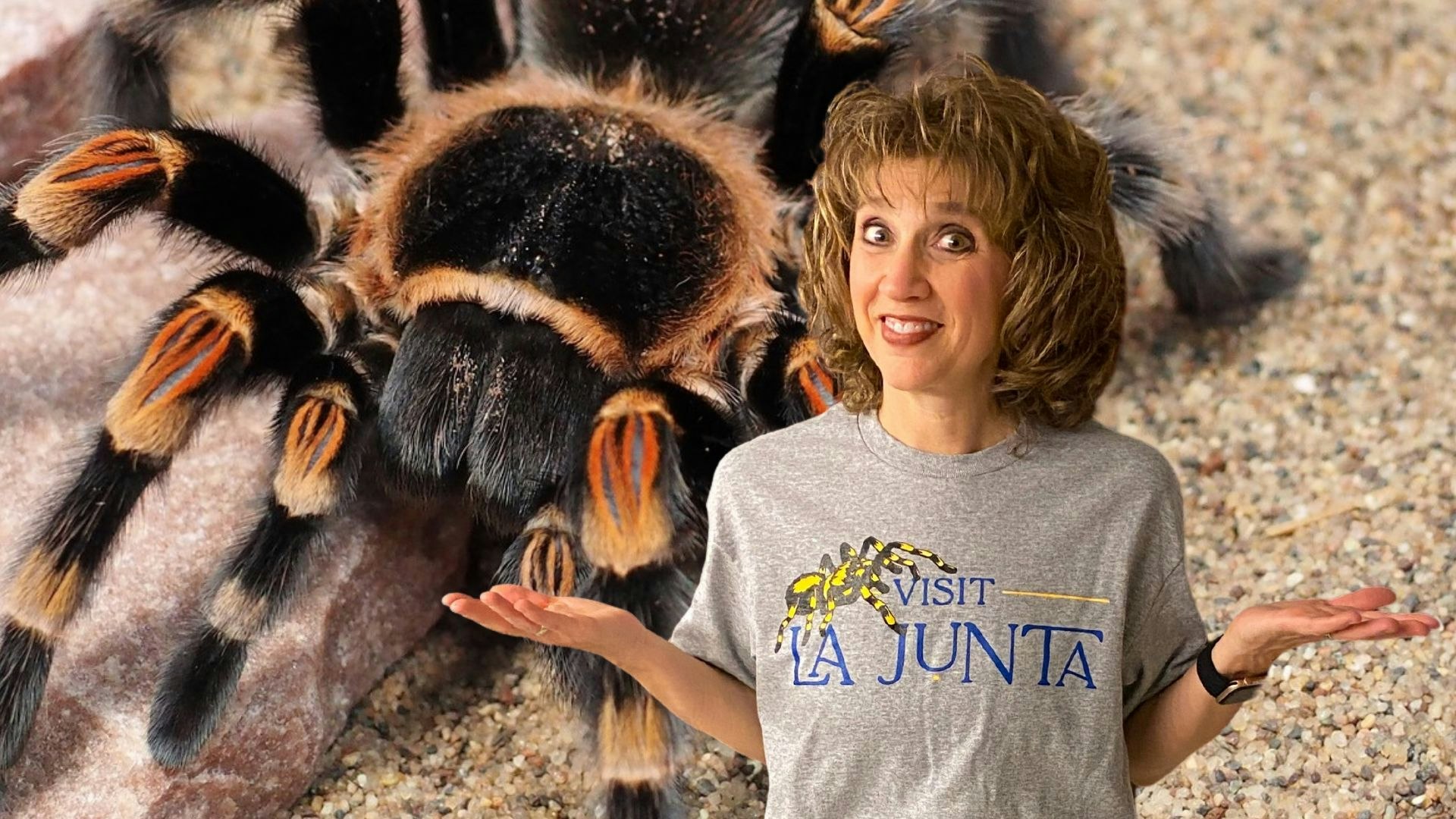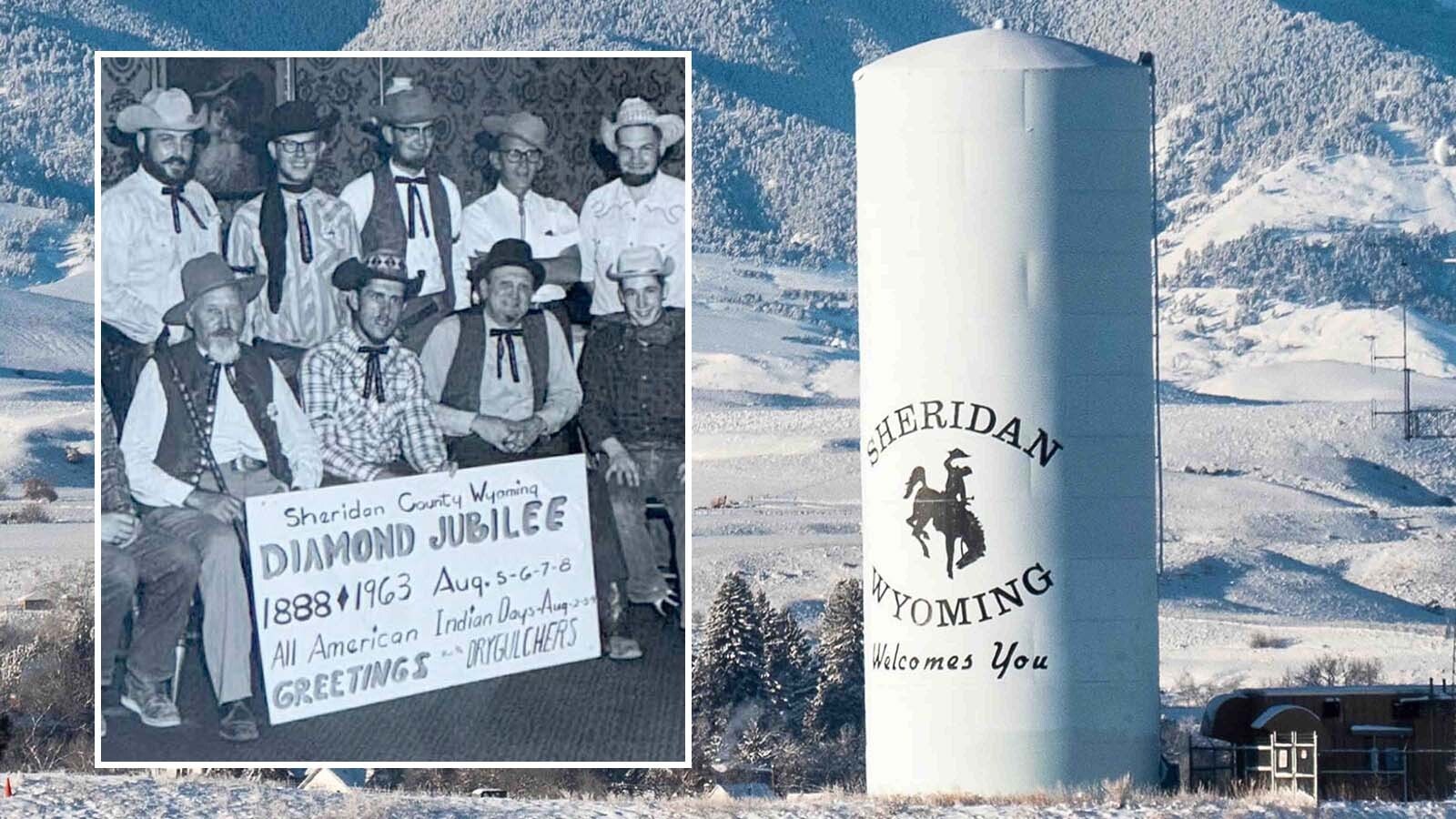Editor’s Note: Cowboy State Daily features writer Wendy Corr is traveling across the country as a musician with Cody-based Dan Miller’s Cowboy Music Revue. Wendy will report regularly from the road about people and places within reach of the Cowboy State.
Fans of the 1990 horror comedy “Arachnophobia” may find their promised land in the rural Great Plains town of La Junta, Colorado.
That’s because La Junta is ground zero for the annual mating ritual of tens of thousands aphonopelma, or Oklahoma brown tarantula. For a few months each year, this tiny community in southeast Colorado is prime viewing for fans of the brown-and-black arachnids, especially from August to October when the males emerge, looking for love.
Rather than be repulsed when overrun by the large, hairy spiders, La Junta decided last year to embrace the annual ritual as a tourism opportunity.
“We have over 400,000 acres of U.S. Forest Service land on the Comanche National Grasslands, which is wide open space where you can go and see the tarantulas,” said Pam Denahy, director of tourism for La Junta, which last year launched its first “Tarantula Fest” to celebrate the awe-inspiring – and at times horror-evoking – arachnids.
Although the phenomenon has been happening for years, it wasn’t until 2018 that the local tourism board saw an opportunity to boost visitation based on the annual mating practices of the local tarantulas.
“A lot of people call it migration, but it’s technically their mating season,” Denahy told Cowboy State Daily. “It’s the males looking to mate with the females.”
She said that observing the phenomenon is “quite a sight.”
“They’re large spiders,” said Denahy. “So, it’s an experience if you’ve never seen them before.”
Tarantulas In The United States
The Oklahoma brown tarantula is one of 30 species of tarantulas found in the United States.
While their appearance is frightening to many people (the arachnid can weigh from 1 to 3 ounces when fully grown with a leg span of 4 to 5 inches), the tarantula is actually a relatively docile creature; and although their fangs are venomous, the venom is only toxic to small animals.
The tarantulas that are on the move in the fall in southeastern Colorado are only the males – the females are nestled safely in their burrows, waiting for the males to come knocking. And the males may travel as far as a mile in search of just the right mate.
But for the male tarantulas, their labor of love also is a suicide mission. While female tarantulas can live as long as 30 years, once males mate their lives are about over.
Often males lose interest in eating anything after they mate, and so die of starvation. Others die in more horrible ways – in some cases, the female eats the male after mating.
And truly unlucky tarantulas are captured by giant wasps (called tarantula hawks) that prey on the arachnids, paralyzing them with venom, then laying eggs on the stunned spider. When the larvae emerge, they feed on the still-living tarantula.
‘The Road Was Moving’
On the Comanche National Grasslands, tarantulas in search of mates can literally carpet the landscape in the late summer and early fall.
Larry Shirley, who works as the technical director for the Otero Junior College Theater Department in La Junta, recalled a disturbing experience he had with the menacing-looking arachnids many years ago.
“I was in the oil fields at night doing security work,” Shirley told Cowboy State Daily. “And coming down through, it looked like the road was moving. Well, I’d never seen it before, and I drove across and found out it was tarantulas.”

Tarantula Trek
Denahy said the first annual Tarantula Fest, which was held in October, was a success, boosting the ability of area businesses to capitalize on the numbers of people who are keenly interested in the creepy crawlers’ attempts to mate.
Some are people like KeeGan Johnson of Rawlins, who has turned an obsessive hobby of collecting and raising tarantulas and other arachnids into an online business.
“It’s a great phenomenon down here, and we’re excited to be able to share it with people that are interested in coming and seeing the tarantulas,” said Denahy.
She noted that after the tourism board began to promote the annual mating ritual in 2018, their lodging tax dollars started to track upwards. So, they decided to create a formal festival around the active arachnids.
“We were able to have a tarantula parade,” said Denahy. “We had a bike ride, we partnered with the U.S. Forest Service and had tours on the Comanche National Grasslands. And then some people actually brought tarantulas, so that if you weren’t able to go on the tours, you could actually see the tarantulas and learn about them and experience them in real life.”
Denahy added that the festival offers an opportunity to educate the public about the need to protect the spiders’ natural habitat.
“We’re trying to do it in a smart, sustainable and protective way for the tarantulas, to come and see them while protecting them and enjoying them in their natural habitat,” Denahy said.
The tourism board has created a dedicated website for anyone interested in observing the phenomenon.
“I think we’ve laid out some really good (hiking) routes, and we also have a driving route, if you want to check that one out as well,” said Denahy.
Not in Wyoming, Thank You
Tarantulas have never been documented in Wyoming, although a cousin – aliatypus or “trapdoor” spider – was captured and identified in April 2022 in Lincoln County. The aliatypus are in the infraorder of mygalomorphae, the same as tarantulas. The Facebook page “Spiders of Wyoming” reported the identification, noting that the species is native to Wyoming, although hard to find.
Other similar large spiders native to Wyoming are wolf spiders, which are found in pastures and fields. The impressive size of the hogna carolinensis wolf spider (sometimes growing to 4 inches in diameter) can often confuse people, according to the Spiders of Wyoming page. But, like the tarantula, they have little interest in people.
“They’re very docile creatures,” said Denahy. “They leave you alone.”






